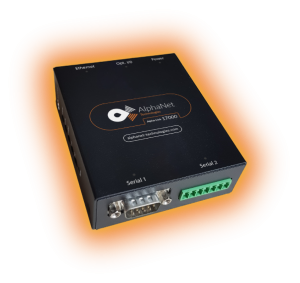The Modbus Gateway AlphaNet AT17000-MMt is a powerful device designed to seamlessly integrate Modbus RTU/ASCII devices into modern Ethernet-based networks. To harness its capabilities, proper installation is crucial. In this guide, we’ll walk you through the steps to install the AT17000-MMt and ensure a smooth transition to enhanced industrial connectivity.
H2: Pre-Installation Preparations
H3: Setting the Stage for a Successful Installation
Before you begin the installation process, it’s essential to make some preparations:
1. Gather Required Materials
Ensure you have all the necessary materials, including the AT17000-MMt device, an Ethernet cable, a power source, and the user manual for reference.
2. Assess Device Compatibility
Verify that your Modbus RTU/ASCII devices are compatible with the AT17000-MMt. Some legacy devices may require firmware updates or additional hardware to work with the gateway.
3. Plan Device Placement
Determine the optimal location for the AT17000-MMt. It should be placed close to the Modbus RTU/ASCII devices it will connect to while having access to an Ethernet connection and a power source.
4. Ensure Safety
Ensure that you’re working in a safe environment, free from hazards, and that you have any necessary personal protective equipment.
H2: Step-by-Step Installation Guide
H3: From Unboxing to Connectivity
Follow these steps to install the Modbus Gateway AlphaNet AT17000-MMt:
1. Unbox and Inspect
Start by unboxing the AT17000-MMt device and inspecting it for any visible damage during shipping. Ensure that all included components are present.
2. Device Placement
As per your pre-installation planning, place the AT17000-MMt in its designated location. Ensure that it’s secure and won’t be exposed to excessive heat, moisture, or physical damage.
3. Connect Ethernet Cable
Connect one end of the Ethernet cable to the Ethernet port on the AT17000-MMt and the other end to your Ethernet network switch or router. Ensure a secure connection.
4. Power Connection
Connect the power source to the AT17000-MMt. If your device supports Power over Ethernet (PoE), the Ethernet cable will provide both power and data transmission. If not, use the included power adapter to connect to a power outlet.
5. Device Connectivity
Connect your Modbus RTU/ASCII devices to the AT17000-MMt using appropriate communication cables. Ensure that the connections are secure and correctly wired according to the device’s specifications.
6. Configure IP Address
To access the AT17000-MMt’s web interface for configuration, you’ll need to know its IP address. By default, it may be set to obtain an IP address automatically via DHCP. If not, consult the user manual or the device label for default IP information.
7. Access the Web Interface
Open a web browser on a computer connected to the same network as the AT17000-MMt. Enter the device’s IP address in the browser’s address bar and press Enter.
8. Login and Configuration
You’ll be prompted to log in to the AT17000-MMt’s web interface. Refer to the user manual for the default username and password. Once logged in, you can configure the gateway settings to match your network requirements. This includes setting communication parameters, such as baud rate and parity, as well as specifying the Modbus RTU/ASCII device settings.
9. Test Communication
After configuring the AT17000-MMt, perform a communication test to ensure that it’s properly exchanging data between your Modbus devices and the Ethernet network. Monitor the status indicators on the device to confirm successful communication.
10. Monitor and Troubleshoot
Regularly monitor the AT17000-MMt’s performance to ensure uninterrupted data exchange. If issues arise, consult the user manual or contact AlphaNet Technologies’ technical support for assistance.
H2: Conclusion: Enhanced Connectivity Achieved
H3: Streamlined Operations and Efficiency
Properly installing the Modbus Gateway AlphaNet AT17000-MMt is the key to unlocking enhanced industrial connectivity, streamlining operations, and improving efficiency. By following these installation steps, you can seamlessly integrate Modbus RTU/ASCII devices into your Ethernet-based network, ensuring real-time data exchange, remote monitoring, and efficient automation.
Remember that ongoing monitoring and maintenance are essential to ensure that your AT17000-MMt continues to perform optimally. With reliable connectivity in place, your industrial operations can achieve new levels of productivity and effectiveness in today’s interconnected world.


